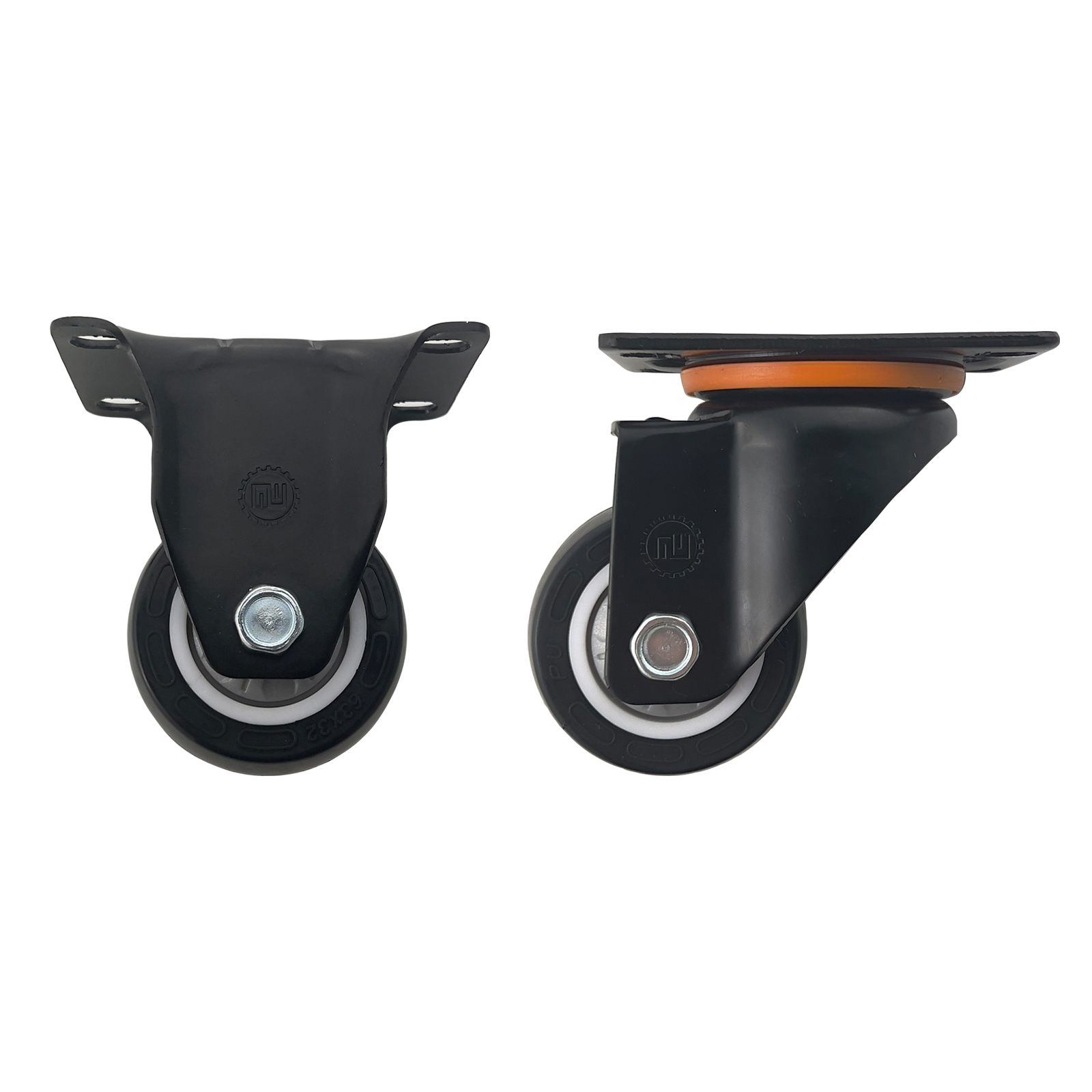When it comes to mobility solutions in industrial, commercial, or residential environments, casters play an essential role. But with so many types of casters available on the market, choosing the right one for your application can be challenging. In this comprehensive guide, we’ll explore the different types of casters, their uses, and how to select the best one based on your specific needs. Whether you're replacing wheels on a chair, outfitting a warehouse cart, or customizing medical equipment, understanding caster wheel types can make all the difference.
What is a Caster?
A caster is a wheeled device typically mounted to the bottom of a larger object, enabling easier movement and transport. Casters are used in a wide range of industries, including healthcare, manufacturing, retail, and hospitality.
What Are the Types of Casters?
They come in various sizes, materials, and functionalities—each designed for specific environments and loads.
1. Swivel Casters
Swivel casters are designed to rotate 360 degrees, allowing for excellent maneuverability. These casters are ideal for environments where sharp turns and tight navigation are necessary, such as in hospitals, restaurants, and offices. They’re often used on chairs, toolboxes, and mobile carts.
Key Features:
360° rotation
Ideal for dynamic movement
Often paired with brakes for added safety
Best for:
Indoor environments with limited space requiring frequent directional changes.
2. Rigid Casters (Fixed Casters)
Rigid casters do not swivel and only allow for forward and backward movement. They are best used in combination with swivel casters to provide a balance between control and maneuverability.
Key Features:
Stable linear movement
Can handle heavier loads than swivel casters
Often used in pairs with swivel casters
Best for:
Straight-line transport in warehouses, industrial environments, and loading areas.
3. Locking Casters
These are casters equipped with a locking mechanism that secures the wheel and sometimes the swivel function. Locking casters provide stability and safety when the object needs to remain stationary.
Key Features:
Wheel locks or total locks
Safety-enhancing design
Easy to engage and disengage
Best for:
Medical equipment, workbenches, and mobile platforms requiring occasional stationary use.
4. Industrial Casters
Industrial casters are designed for heavy-duty applications, capable of bearing loads from hundreds to thousands of pounds. They are made with durable materials like forged steel, polyurethane, or cast iron.
Key Features:
High load capacity
Resistant to chemicals and high temperatures
Shock-absorbing models available
Best for:
Warehouses, manufacturing plants, and heavy equipment.
5. Medical Casters
These casters are specifically engineered for hospital beds, trolleys, and medical carts. They are often antistatic, quiet, and non-marking, helping maintain hygiene and quiet operation.
Key Features:
Antimicrobial materials
Low noise levels
Easy to clean
Best for:
Hospitals, clinics, and laboratories.
6. Furniture Casters
Used on chairs, tables, sofas, and desks, furniture casters are usually small and lightweight. They're designed more for aesthetics and low-weight applications.
Key Features:
Decorative design options
Easy installation
Smooth movement on hard floors or carpets
Best for:
Residential and office furniture.
7. Stem Casters
Unlike plate-mounted casters, stem casters attach via a stem insert and are commonly used on office chairs and lightweight mobile fixtures.
Key Features:
Easy to install and replace
Available in various stem types (grip ring, threaded, etc.)
Suitable for tight spaces
Best for:
Chairs, mobile shelves, and retail displays.
8. Plate Casters
These casters mount via a flat plate, offering a more stable and secure connection than stem casters. They're used in medium- to heavy-duty applications.
Key Features:
Higher load capacity
Durable and long-lasting
Wide mounting surface
Best for:
Industrial carts, heavy-duty racks, and dollies.
9. Pneumatic Casters
These casters have air-filled rubber tires, making them perfect for uneven or rough surfaces. They provide shock absorption and a smooth ride.
Key Features:
Smooth mobility on outdoor terrain
Shock-absorbing
Quiet operation
Best for:
Outdoor carts, garden equipment, and mobile platforms on rugged surfaces.
10. Spring-Loaded Casters
These are shock-absorbing casters with built-in springs to reduce vibration. They protect delicate equipment during transit.
Key Features:
Absorbs shock and vibration
Reduces equipment damage
Quiet and stable movement
Best for:
Sensitive electronics, lab equipment, and AV carts.
How to Choose the Right Type of Caster?
When selecting a caster, consider the following factors:
Load capacity: How much weight will each caster need to support?
Floor surface: Smooth, carpeted, or rough terrain?
Mobility needs: Will you need high maneuverability or straight-line stability?
Environment: Is it wet, chemical-prone, sterile, or noisy?
Mounting type: Stem or plate?
Matching the right caster type to your application ensures better performance, safety, and durability.
Conclusion
Casters may seem like small components, but are crucial for mobility and efficiency across countless industries. By understanding the different types of casters, their advantages, and specific uses, you can make informed decisions that enhance functionality and safety. There's a caster solution for every need, from swivel and rigid casters to medical and industrial casters.
